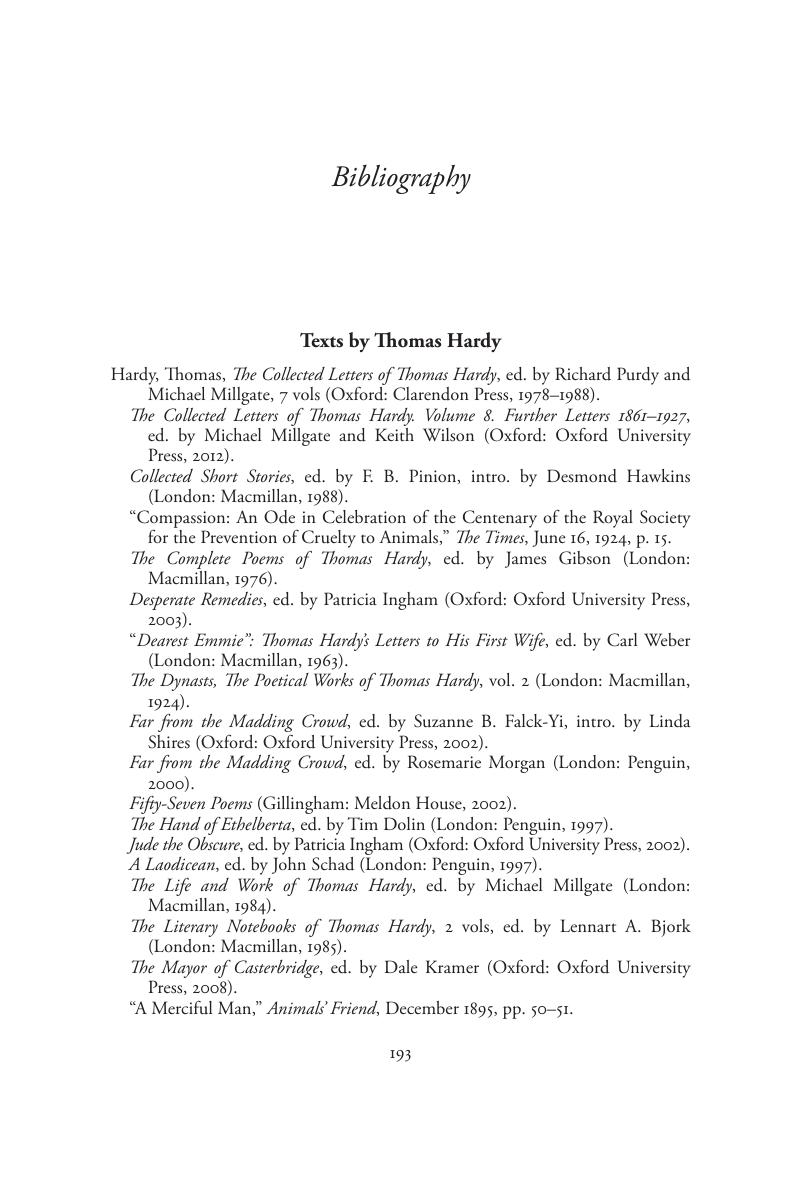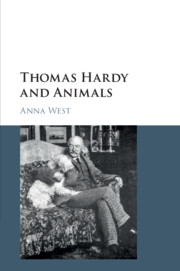Book contents
- Thomas Hardy and Animals
- Thomas Hardy and Animals
- Copyright page
- Contents
- Acknowledgments
- Abbreviations
- Introduction
- Chapter 1 What Does It Mean to Be a Creature?
- Chapter 2 “The Only Things We Believe in Are the Sheep and the Dogs”
- Chapter 3 “Artful” Creatures, Part I: Animal Language
- Chapter 4 “Artful” Creatures, Part II: Can a Snake Have a Face?
- Chapter 5 “Artful” Creatures, Part III: “Can They Suffer?”
- Chapter 6 Useful Creatures: Rethinking Hardy’s Humanitarianism
- Appendix
- Bibliography
- Index
- References
Bibliography
Published online by Cambridge University Press: 04 May 2017
- Thomas Hardy and Animals
- Thomas Hardy and Animals
- Copyright page
- Contents
- Acknowledgments
- Abbreviations
- Introduction
- Chapter 1 What Does It Mean to Be a Creature?
- Chapter 2 “The Only Things We Believe in Are the Sheep and the Dogs”
- Chapter 3 “Artful” Creatures, Part I: Animal Language
- Chapter 4 “Artful” Creatures, Part II: Can a Snake Have a Face?
- Chapter 5 “Artful” Creatures, Part III: “Can They Suffer?”
- Chapter 6 Useful Creatures: Rethinking Hardy’s Humanitarianism
- Appendix
- Bibliography
- Index
- References
Summary

- Type
- Chapter
- Information
- Thomas Hardy and Animals , pp. 193 - 206Publisher: Cambridge University PressPrint publication year: 2017



